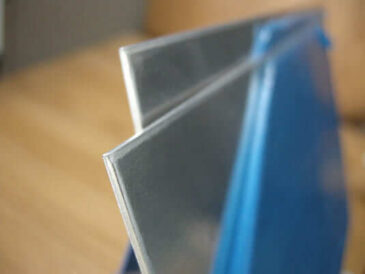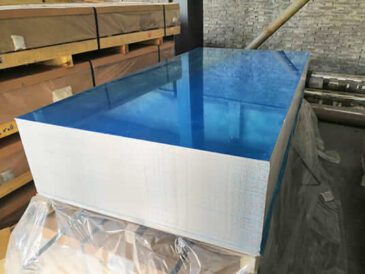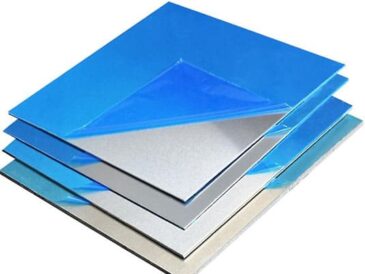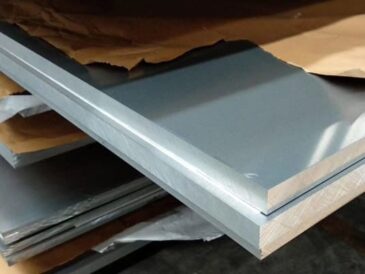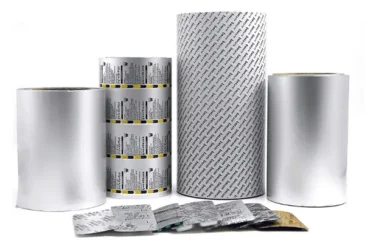Aluminum alloy for ships
1289 Views 2024-04-25 08:21:20
Aluminum alloy for ships
Aluminum alloys have been used in the shipbuilding industry for nearly a hundred years. With the rapid development of the domestic and foreign shipbuilding industries, more and more attention has been paid to the lightweight of ships. Due to the low density, high strength, high rigidity and corrosion resistance of aluminum, ship design Ships built with aluminum are 15-20% lighter than ships built with steel or other composite materials. The high toughness, corrosion resistance and weldability of aluminum alloys provide a good choice for building ships with strict weight requirements. Because the processing cost of aluminum is lower, it is more economical to use aluminum to build ships.
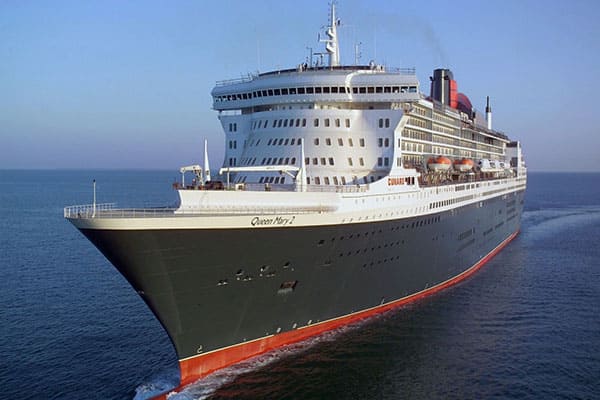
Aluminum alloy for ships
Aluminum alloys can be used as plates, extruded and cast. Coupled with the outstanding physical properties of aluminum alloys, it is very economical to manufacture ships with aluminum alloys.
From the perspective of ship designers, ships made of aluminum alloys can achieve higher speeds and longer service life. These advantages of aluminum alloys have led to rapid development in the application of aluminum alloys. The shipbuilding industry is dominated by aluminum materials. Provides a broad application market.
Aluminum alloys used on ships can be divided into deformed aluminum alloys and cast aluminum alloys
The application of deformed aluminum alloys in shipbuilding in various countries ranges from the superstructure of large surface ships, the construction of thousands of tons of all-aluminum ocean research vessels, ocean-going merchant ships and passenger ships, to hydrofoils, hovercrafts, passenger ferries, catamaran passenger ships, transportation Deformed aluminum alloys are widely used on various high-speed passenger ships and military speedboats such as boats and landing crafts. Cast aluminum alloy is mainly used for components such as pumps, pistons, outfitting parts, and rain mine shells.
Material selection principles and advantages of aluminum alloy for ships
Higher strength ratio and specific modulus
The yield strength and elastic modulus of materials are the most basic parameters for calculating the strength of ship structures and determining the size of the structure. Since the elastic modulus and density of various aluminum alloys are roughly the same, adding a small amount of alloying elements or changing the heat treatment state has little effect on them, so increasing the yield strength within a certain range is beneficial to reducing the weight of the ship structure.

5083 aluminum for skeleton of ships
Generally, the density of aluminum alloy is about 2.7~2.8/cm3, and the elastic modulus is about 70~73GPa. However, it is usually difficult for high-strength aluminum alloys to have excellent corrosion resistance and weldability at the same time. Therefore, aluminum alloys with medium strength and corrosion resistance that can be welded are generally selected for shipboard aluminum alloys. In addition, cast aluminum alloys also have certain applications in the shipbuilding field. application.
Excellent welding performance
For ships, welding connections have obvious advantages over riveting connections, so welding methods have been widely used in shipbuilding, basically replacing riveted structures.
Currently, automatic argon arc welding methods are mainly used in aluminum ship construction. The good weldability of aluminum alloys means that the tendency of aluminum alloys to form cracks during welding is smaller, that is, aluminum alloys have good welding crack resistance, and the performance of the welded joints does not change much after welding. Because the properties lost due to welding cannot be restored by reheat treatment under shipbuilding conditions, this is one of the important features that distinguishes aluminum alloy for ships from other structural aluminum alloys.
The post-weld strength of AL-Zn-Mg (7000 series) and AL-Mg-Si (6000 series aaluminum alloys) is significantly reduced, and the post-weld corrosion resistance of AL-Zn-Mg series alloys is also poor. Therefore, these two series alloys are used as There are certain restrictions when welding marine materials. AL-Mg (5000 series) alloys do not have this drawback.
AL-Zn-Mg series alloys are mainly used for components that can be heat treated after welding (such as torpedo shells), and AL-Mg-Si series alloys are mainly used as profiles.
Excellent corrosion resistance
Ship structures are mostly used in harsh seawater media and marine environments. Therefore, whether aluminum alloys are corrosion-resistant is one of the main indicators that determine whether they can be used as marine aluminum alloys.
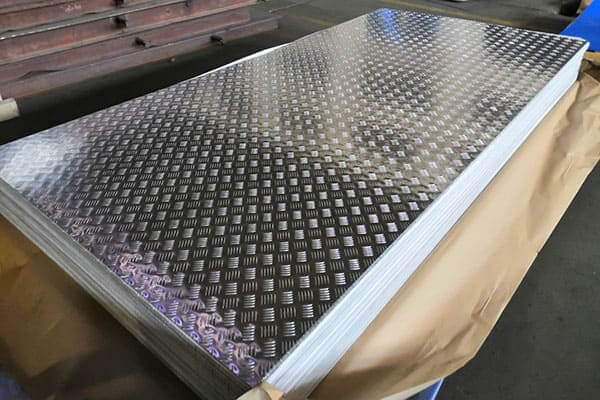
Aluminum alloy for ships
Marine aluminum alloy substrates and welded joints are generally required to have no stress corrosion, spalling corrosion and intergranular corrosion tendencies in seawater and marine environments; contact corrosion, crevice corrosion and marine adhesion corrosion should be avoided as much as possible; small uniform corrosion and spots are allowed. corrosion.
Good cold and hot forming properties
During the construction process, ships must undergo cold processing (such as hemming, curling, roll bending, stamping, etc.) and hot processing (such as hot bending, fire correction, etc.). Therefore, marine aluminum alloys are required to be easy to process and form, not to produce defects such as cracks during processing, and to still meet performance requirements such as strength and corrosion resistance after processing.
Advantages of aluminum alloys in marine applications
Aluminum alloy has the characteristics of small specific gravity and elastic modulus, corrosion resistance, weldability, easy processing, non-magnetic and good low temperature performance. It has the following advantages when used in ships:
- (1) Due to its small specific gravity, it can reduce the weight of the ship, reduce the capacity of the single engine, and increase the speed; it can reduce fuel consumption and save fuel; it can improve the aspect ratio of the ship, increase stability, and make the ship easy to maneuver; You can also increase the load capacity and gain additional profits.
- (2) Due to its good corrosion resistance, it can reduce maintenance costs such as oiling and extend its service life (usually more than 20 years).
- (3) The processing and forming performance is good, and it is easy to carry out various forms of processing such as cutting, stamping, cold bending, forming and cutting, etc., and is suitable for the streamlined hull; it can extrude large wide thin-walled profiles, reducing the number of welds and Rationalize and lightweight the hull structure.
- (4) The welding performance is good and can be welded easily.
- (5) The elastic modulus is small, the ability to absorb impact stress is large, and it has greater safety.
- (6) Aluminum scrap is easy to recover and can be recycled.
- (7) No low-temperature brittleness, most suitable for low-temperature equipment.
- (8) Because it is non-magnetic, the compass will not be affected; the all-aluminum ship can avoid mine attacks and is suitable for use as a minesweeper.
- (9) There is no insect damage or deformation caused by drying; it does not burn and is safer in case of fire.
Types, characteristics and uses of marine aluminum alloys
Aluminum alloy for ships (Marine aluminum alloys) can be divided into deformed aluminum alloys and cast aluminum alloys according to different manufacturing processes. Since marine aluminum alloys have special requirements for strength, corrosion resistance, weldability, etc., aluminum-magnesium (5000 Series) alloys, aluminum-magnesium-silicon (6000 series) alloys and aluminum-zinc-magnesium (7000 series) alloys.

Aluminum ship building
Among them, aluminum-magnesium series alloys are the most widely used on ships. The following mainly introduces the deformed aluminum alloys for ships.
Aluminum alloys for ships can be divided into aluminum alloys for hull structures and aluminum alloys for outfitting according to their uses. The aluminum alloys used for ship shell structures are mainly 5083 alloy, 5086 alloy and 5456 alloy.
Since 6000 series alloys will undergo intergranular corrosion in seawater, they are mainly used in the superstructure of ships. Outfitting aluminum alloys are mainly used in extruded profiles.
The strength and process performance of 7000 series alloy after heat treatment are even better than that of 5000 series alloy. It has broad application prospects in ship manufacturing. It is mainly used in ship superstructures, such as extruded structures, armor plates, etc. However, the disadvantage of 7000 alloy is that it is resistant to The stress corrosion resistance is poor, which limits the use range of this series of alloys.
| Category | Alloy | Temper | Chemical composition (JIS standard) | Features | Application |
| For hull | 5052 | O H14 H34 |
Al:Remain Si:≤0.25 Cu:≤0.10 Mg:2.2~2.8 Zn:≤0.10 Mn:≤0.10 Cr:0.15~0.35 Fe:≤0.40 |
Medium strength, good corrosion resistance and formability, high fatigue strength | Superstructure, auxiliary components, boat hull |
| 5083 | O H32 |
Al:Remain Si:≤0.40 Cu:≤0.10 Mg:4.0~4.9 Zn:≤0.25 Mn:0.40~1.0 Ti:≤0.15 Cr:0.05~0.25 Fe:0~0.400 |
Typical aluminum alloy for welding, with the highest strength among non-heat-treatable alloys, good weldability, corrosion resistance and low temperature performance | Main hull structure | |
| 5086 | H32 H34 |
Al:Remain Si:≤0.40 Cu:≤0.10 Mg:3.5~4.5 Zn:≤0.25 Mn:0.20~0.7 Ti:≤0.15 Cr:0.05~0.25 Fe:0~0.500 |
The weldability and corrosion resistance are the same as 5083, the strength is slightly lower, and the extrudability is improved. | Main structure of the hull (thin-walled and wide-width extruded profiles) | |
| 5454 | H32 H34 |
Al:Remain Si:≤0.25 Cu:≤0.10 Mg:2.4~3.0 Zn:≤0.25 Mn:0.50~1.0 Ti:≤0.20 Cr:0.05~0.20 Fe:0.000~0.400 |
22% higher strength than 5052, good corrosion resistance and weldability, average formability | Hull structures, pressure vessels, pipelines, etc. | |
| 5456 | O H321 |
Al:Remain Si:≤0.50 Cu:3.8~4.9 Mg:1.2~1.8 Zn:≤0.30 Mn:0.30~0.9 Ti:≤0.15 Ni:≤0.10 Fe:0.00~0.50 Fe+Ni:0.000~0.500 |
Similar to 5083, but slightly higher strength and susceptible to stress corrosion | hull and deck | |
| 6061 | T4 T6 |
Cu:0.15~0.4 Mn:0.15 Mg:0.8~1.2 Zn:0.25 Cr:0.04~0.35 Ti:0.15 Si:0.4~0.8 Fe:0.7 Al:Remain |
Corrosion-resistant aluminum alloy that can be strengthened by heat treatment. It has high strength but low weld strength. It is mainly used for screwed and riveted structures that are not in contact with seawater. | Superstructure, bulkhead structure, frame, etc. | |
| For outfitting | 1050 1200 |
H112 O H12 H24 |
Al :Remain Si:≤0.25 Fe:0.40 Cu :≤0.50 Mn:≤0.50 Mg:≤0.50 Zn:≤0.15 Ti :≤0.03 |
Low strength, good processability, weldability and corrosion resistance, high surface treatment | interior decoration |
| 3003 | H112 O H12 |
Al :Remain Si:≤0.60 Fe:≤0.70 Cu :≤0.50 Mn:1.0~1.5 Zn:≤0.10 |
10% higher strength than 1100, good formability, weldability, and corrosion resistance | Interior, roof and side panels of LPG tanks |
Dimensions of aluminum plates for ships
The thickness of the plate is determined by the hull structure, ship specifications and usage location. From the perspective of lightweighting the hull, thin plates are generally used as much as possible, but the depth of corrosion of the plate during use should also be considered. Commonly used plates are 1.6mm. Thin plates above and thick plates below 30mm.
In order to reduce welding, 2.0m wide aluminum plates are often used. Large ships use 2.5m wide aluminum plates. The length is generally 6m. Some plates with special specifications are also used according to shipyard contracts.

Extra wide aluminum plate for ship building
In order to improve the anti-slip effect, the deck generally adopts pattern board.
Examples of uses for marine aluminum alloys
| Use | Alloy | Product types |
| Ship side, bottom shell | 5083,5086,5456,5052 | Plate, profile |
| Keel | 5083 | Plate |
| Rib cage | 5083 | Plate, profile |
| Ribs, next door | 5083,6061 | Plate |
| Engine pedestal | 5083 | Plate |
| Deck | 5052,5083,5086,5456,5454,7039 | Plate, profile |
| Wheelhouse | 5083,6N01,5052 | Plate, profile |
| Bulwark | 5083 | Plate, profile |
| Chimney | 5083,5052 | Plate |
| Container top and side panels | 3003,3004,5052 | Plate |
| Porthole | 5052,5083,6063,AC7A | Profiles, castings |
| Gangway | 5052,5083,6063,6061 | Profile |
| Mast | 5052,5083,6063,6061 | tube, rod, profile |
| Structural materials for offshore vessel containers | 6063,6061,7003 | Profile |
| Engines and other marine components | AC4A,AC4C,AC4CH,AC8A | Casting |
The tempers of marine aluminum alloys
The state of aluminum alloy indicates the processing method, internal structure and mechanical properties of the material. Generally, engineering companies use materials in different states according to different uses. 5000 series alloys used for hull structures adopt O and H states, and 6000 series alloys adopt T state. The H-state details of 5000 series alloys and the state codes of 6000-series alloys and AC-series cast alloys listed in Japan’s JIS standards are shown in the table below.

Marine aluminum alloys
Temper and process of 5000 series aluminum for hull structure
| Temper | Processing technology |
| H111 | After annealing, cold working (rolling or straightening) |
| H112 | Extruded state or original state after hot rolling, but there are requirements for the mechanical properties of the material, and mechanical property experiments are required. |
| H116 | Cold working and low temperature annealing to improve the material’s resistance to spalling corrosion. |
| H14 | The tensile strength is between O state and H18 state (1/2 hard state) |
| H311 | H31 plus small cold working status |
| H32 | The tensile strength is between the O state and the H34 state (stabilization treatment is performed after cold working. 1/4 hard state) |
| H321 | H32 plus small cold working status |
| H323 | The special processing state improves the stress corrosion cracking resistance of H32 (1/4 hard state) |
| H34 | The tensile strength is between the O state and the H38 state (stabilization treatment is performed after cold working. 1/2 hard state) |
| H343 | The special processing state improves the stress corrosion cracking resistance of H34 (1/2 hard state) |
Temper and process of 6000 series aluminum for hull structure
| Temper | Processing technology |
| T1 | After high-temperature thermal processing and cooling, the natural aging state is suitable for hot-extruded materials that do not undergo cold processing, or straightening and other cold processing products that have little impact on their calibrated mechanical properties. |
| T4 | After solution treatment, natural aging state. It is suitable for products that do not undergo cold processing after solution treatment, or products where cold straightening has little impact on the calibrated mechanical properties. |
| T5 | After high-temperature hot processing, artificial aging state is suitable for products that do not undergo cold processing after high-temperature forming. Or products whose straightening and cold working has little impact on their calibrated mechanical properties. |
| T6 | After solution treatment, artificial failure state. It is suitable for products that do not undergo cold working after solution treatment, or that have little impact on their calibrated mechanical properties due to straightening and other operations. |
| T61 | Treatment in hot water T6 treatment, suitable for castings. |
More Knowledges about aluminum alloy for ships please visit: https://hw-alu.com/applications/aluminum-sheet-for-boat.html

